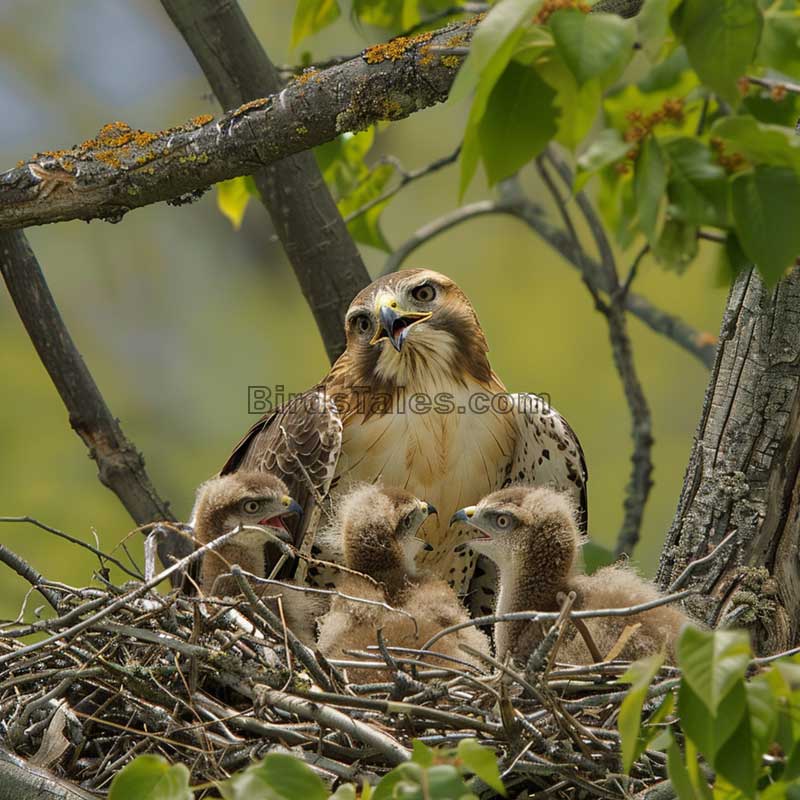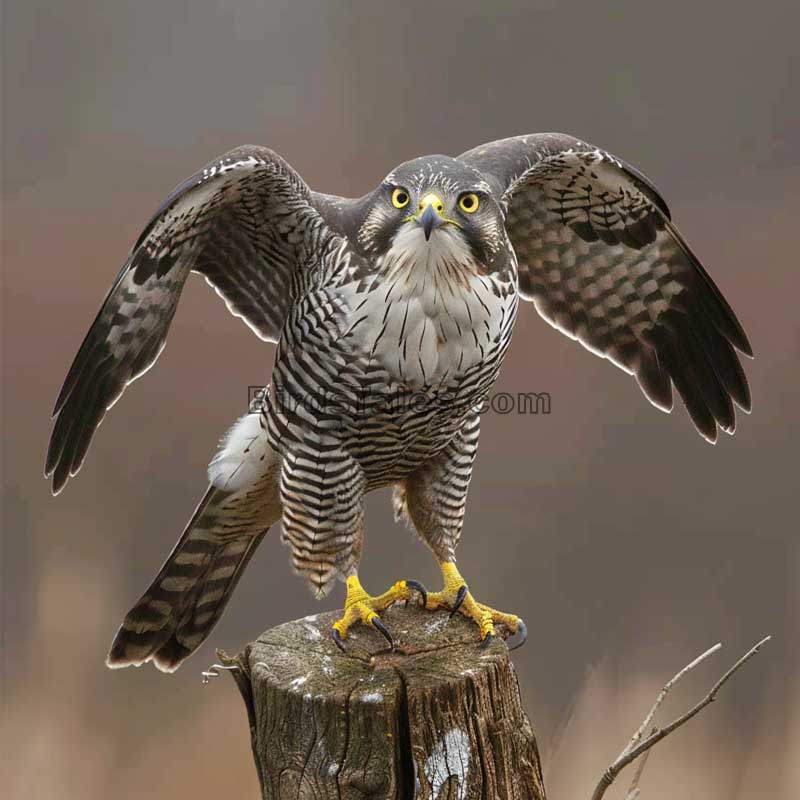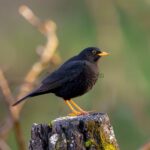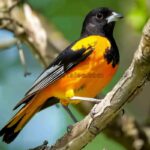Hawk Habitats and Distribution
Hawks are found in a variety of habitats worldwide.
From dense forests to arid deserts, these birds are incredibly adaptable.
Each species has its preferred environment, which supports its hunting and nesting needs.
Forest and Desert Hawks
In forests, hawks use their agility to navigate through trees.
Forest-dwelling hawks, like the Cooper’s hawk, have short wings and long tails for better maneuverability.
They hunt smaller birds and mammals, using the dense foliage as cover.
Desert hawks, on the other hand, are built for open spaces.
The red-tailed hawk is a good example.
They have broader wings, which help them soar for long periods while searching for prey.
Deserts provide a unique set of challenges, but these hawks are well-equipped to handle them.
They can spot prey from great distances and use their speed to capture it.
The American robin is a well-known bird in North America, easily recognized by its reddish-orange breast and cheery song.
Hawk Hunting Techniques
Hawks are expert hunters.
Their techniques are varied and adapted to their environments.
Let’s explore how these birds of prey catch their meals.
Swooping and Diving
Swooping and diving are common hunting methods for hawks.
They use their keen vision to spot prey from high above.
Once they have a target, they dive with incredible speed and precision.
The red-tailed hawk, for example, is known for its impressive diving skills.
This method allows hawks to catch their prey off guard, increasing their chances of a successful hunt.
The American robin is a well-known bird in North America, easily recognized by its reddish-orange breast and cheery song.
Talon and Beak Adaptations
Hawks have strong talons and sharp beaks.
These adaptations are crucial for hunting and feeding.
Talons are used to grab and hold prey, while the beak is used to tear flesh.
The strength and sharpness of these tools make hawks effective hunters.
Their talons can exert a powerful grip, ensuring that prey cannot escape.
The beak, with its hooked shape, is perfect for ripping meat apart.
Hawk Migration Patterns
Hawks are known for their impressive migrations.
These journeys can span thousands of miles, showcasing their endurance and navigational skills.
Migration allows hawks to move from breeding grounds to more suitable winter habitats.
This seasonal movement ensures they have access to food year-round and can escape harsh weather conditions.
Hawks migrate in groups, sometimes forming large flocks.
These flocks, or kettles, provide safety in numbers and help conserve energy.
Migration is not just a physical journey but a remarkable feat of survival and instinct.
Understanding these patterns can help in conservation efforts, ensuring these birds continue to thrive.
The common blackbird (Turdus merula) is a widespread songbird known for its distinct appearance and melodious song. Found across Europe,…
Autumn and Spring Migrations
Autumn marks the start of the migration season for many hawks.
From August to mid-December, hawks begin their journey south.
Long-distance travelers, such as the broad-winged hawk, start early.
They travel from North America to Central and South America.
Short-distance travelers, like the red-tailed hawk, begin later.
Spring migration is equally important.
Hawks return to their breeding grounds, ensuring they have the best spots for raising chicks.
Early arrivals have the advantage of choosing prime nesting areas.
Migration is not without its challenges.
Hawks must navigate vast landscapes, avoid predators, and find food along the way.
Despite these challenges, their instinctual drive ensures they complete their journey.
Hawk Reproduction and Lifecycle
Hawks have fascinating reproductive behaviors.
Their lifecycle includes complex mating rituals, egg-laying, and dedicated parental care.
These behaviors ensure the survival and growth of their species.

Mating Displays and Egg-Laying
Mating displays are a sight to behold.
Hawks perform aerial acrobatics, showcasing their strength and agility.
These displays are not just about attracting a mate but also establishing territory.
Once paired, hawks are known to be monogamous, often staying with the same partner for life.
Female hawks lay about 2 to 4 eggs each year.
The eggs are laid in nests built high in trees or on cliffs.
Both parents take turns incubating the eggs, ensuring they stay warm and protected.
The incubation period lasts about a month.
During this time, the bond between the pair strengthens, crucial for the upcoming challenges of raising their young.
Parental Care and Chick Development
Once the eggs hatch, the real work begins.
Hawk parents are devoted to their chicks.
They hunt tirelessly to feed the hungry brood.
The chicks grow rapidly, needing constant nourishment.
Parents teach their young how to hunt and survive in the wild.
This period of care and training is critical.
Chicks fledge, or leave the nest, after several weeks.
However, they remain dependent on their parents for a while longer.
Learning to hunt effectively takes time and practice.
Parental care during this stage is crucial for the chicks’ survival.
The development of these young hawks into skilled hunters is a testament to their parents’ dedication and effort.
Hawk Diet and Feeding
Hawks have diverse diets, depending on their species and habitat.
Their feeding habits are tailored to their environment and prey availability.
This adaptability makes them efficient hunters.
Common Prey of Hawks
Hawks prey on a variety of animals.
Common targets include snakes, lizards, fish, mice, rabbits, and squirrels.
The red-tailed hawk, for instance, prefers small mammals.
The Cooper’s hawk, on the other hand, primarily hunts birds.
Hawks use their keen vision to spot prey from great distances.
Once they identify a target, they swoop down with incredible speed and precision.
Their sharp talons and beaks are perfect for catching and consuming prey.
These physical adaptations make hawks formidable hunters.
Their diet plays a crucial role in maintaining the balance of their ecosystems, controlling the populations of small animals and insects.
Historical and Cultural Significance
Hawks have played important roles in history and culture.
They are often seen as symbols of strength, freedom, and vision.
Their presence in myths and stories highlights their significance in various cultures.
Hawks in Mythology and Symbolism
In many cultures, hawks are revered as powerful symbols.
In Greek mythology, the hawk is associated with Apollo, the god of prophecy and truth.
Hawks were believed to be messengers of the gods.
In Native American cultures, hawks are seen as protectors and guides.
Their keen vision symbolizes clarity and focus.
The term “war hawk” in politics refers to those who advocate for war.
This term originated during the 1810 Congress debates, reflecting the hawk’s aggressive nature.
Sports teams, like the Atlanta Hawks, use the hawk as a symbol of strength and agility.
These cultural references underline the hawk’s enduring impact on human society.
Types of Hawks
Hawks come in many forms.
Each type has its own special traits and ways of living.
Let’s dive deeper into some well-known types of hawks.
These birds are fascinating, from their hunting methods to their habitats.
Red-tailed Hawk Overview
- Length: 18.1-25.6 inches
- Weight: 24.3-51.5 ounces
- Wingspan: 44.9-52.4 inches
- Habitat: Deserts, forests, and urban areas
- Behavior: Excellent soaring, often seen on utility poles or trees
The red-tailed hawk is a common sight across North America.
They are known for their distinctive red tails.
This feature is most prominent in adults.
Young hawks have brown tails, making them harder to identify.
Red-tailed hawks are adaptable.
You can find them in deserts, forests, and even urban areas.
They are often seen perched high on poles or trees, watching for prey.
These hawks have a varied diet.
They eat small mammals, birds, and reptiles.
Their hunting style involves soaring high and spotting prey from above.
Then, they swoop down with incredible speed to catch it.
Red-tailed hawks are also known for their loud, piercing calls.
This sound is often used in movies to represent any raptor, even eagles.
Cooper’s Hawk Characteristics
- Length: 14.6-17.7 inches
- Weight: 7.8-24.0 ounces
- Wingspan: 24.4-35.4 inches
- Habitat: Woodlands, forests, and cities
- Diet: Primarily birds like pigeons and doves
Cooper’s hawk is a master of stealth and speed.
This hawk is smaller than the red-tailed hawk but just as fierce.
They live in wooded areas and urban environments.
Their agility allows them to hunt birds through dense trees.
Cooper’s hawks have short, rounded wings and long tails.
This helps them navigate through forests easily.
They often surprise birds at feeders, swooping in quickly.
Their diet mainly includes pigeons, doves, and smaller songbirds.
Cooper’s hawks are known for their stealthy hunting tactics.
They can sit quietly for long periods before attacking.
Their presence in urban areas shows their adaptability and cunning nature.
Broad-winged Hawk Migration
- Length: 13.4-17.3 inches
- Weight: 9.3-19.8 ounces
- Wingspan: 31.9-39.4 inches
- Habitat: Eastern North America
- Fun fact: High-pitched, whistling call
The broad-winged hawk is notable for its migration.
These hawks travel in large groups called kettles.
During fall, they migrate from North America to Central and South America.
This journey can be thousands of miles long.
Broad-winged hawks prefer forests for breeding and can be found in eastern North America.
Their migration is a spectacular sight.
Thousands of hawks can be seen soaring together, forming large spirals in the sky.
This behavior helps them conserve energy during long flights.
Broad-winged hawks have a high-pitched, whistling call.
This sound is often heard during their migration.
Peregrine Falcon Insights
- Known for speed and hunting skill
- Often used in falconry
The peregrine falcon, often included among hawks, is the fastest bird in the world.
These falcons can reach speeds over 200 mph when diving for prey.
They are found on every continent except Antarctica.
Peregrine falcons are known for their hunting prowess and have been used in falconry for centuries.
They prefer high perches, like cliffs or tall buildings, to spot their prey.
Peregrine falcons have a diverse diet, including birds and small mammals.
Their sharp vision and powerful talons make them deadly hunters.
The peregrine falcon’s speed and hunting skills are unmatched.
Conclusion
Hawks are more than just birds of prey.
They are vital to our ecosystems, controlling pest populations and maintaining balance.
Their impressive migrations, complex reproductive behaviors, and efficient hunting techniques make them fascinating creatures.
Understanding and conserving hawks is essential.
They are not just symbols of strength and vision but also key players in nature’s intricate web.
Protecting these majestic birds ensures that they continue to soar high in our skies, inspiring awe and respect for generations to come.





